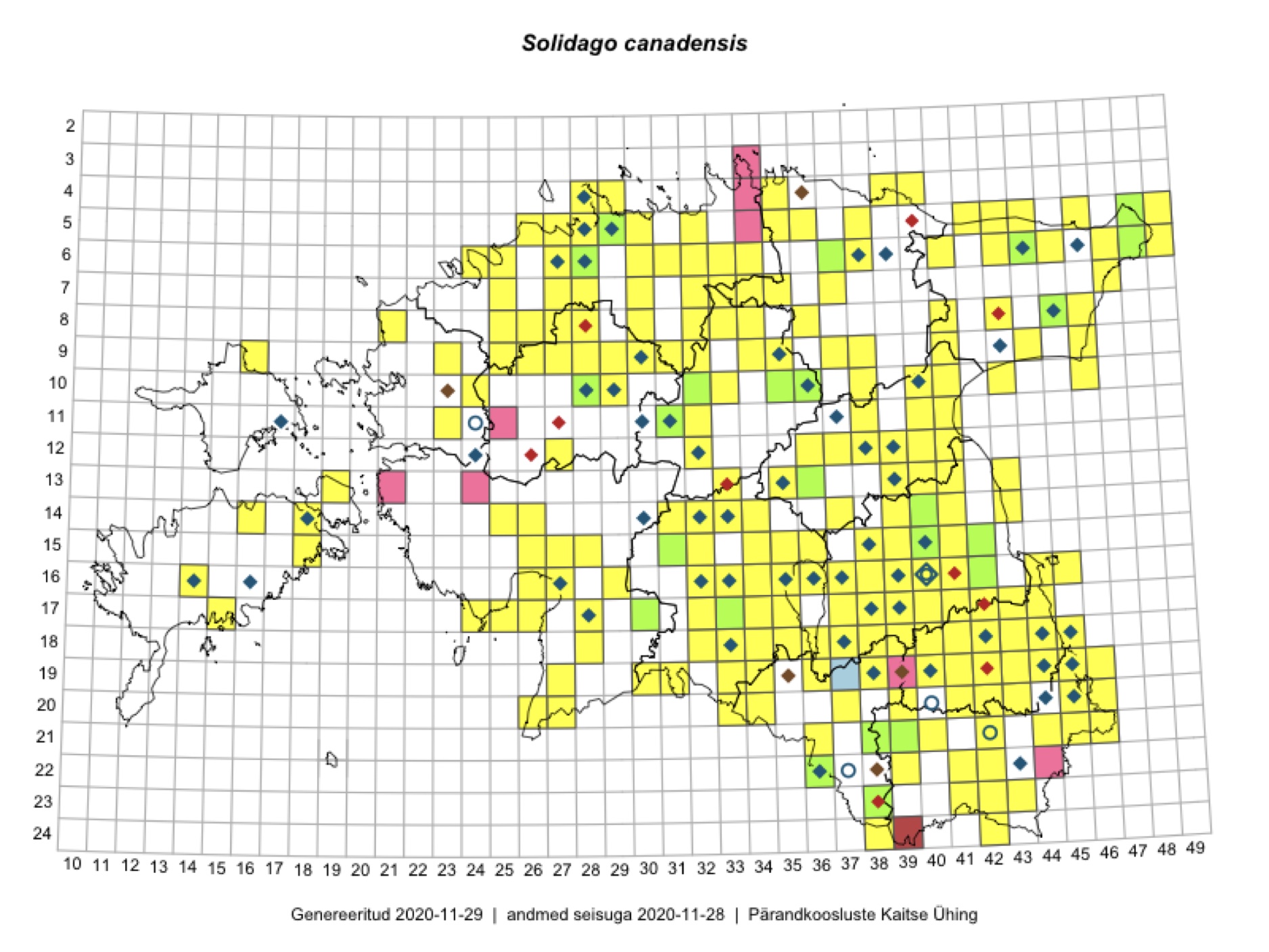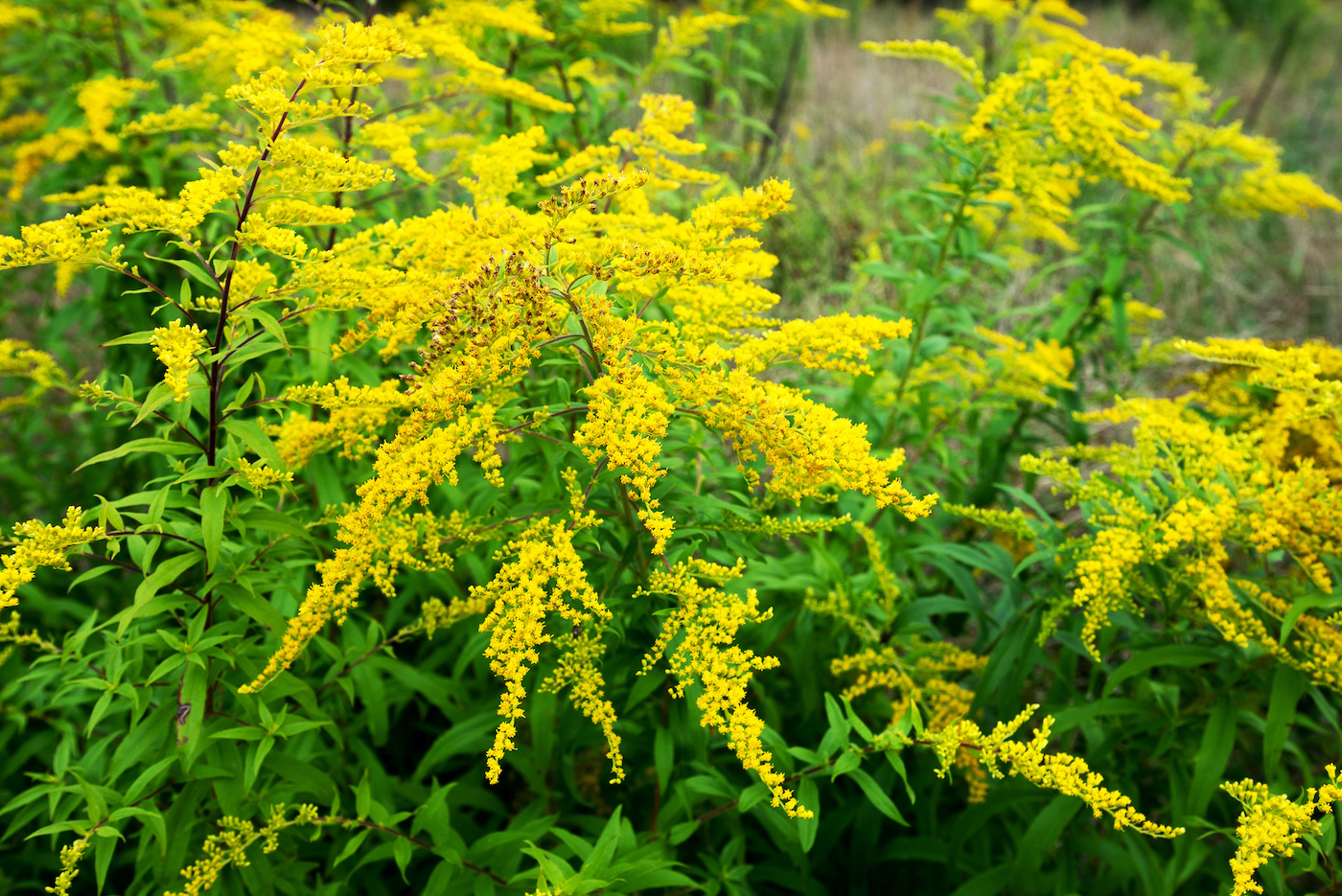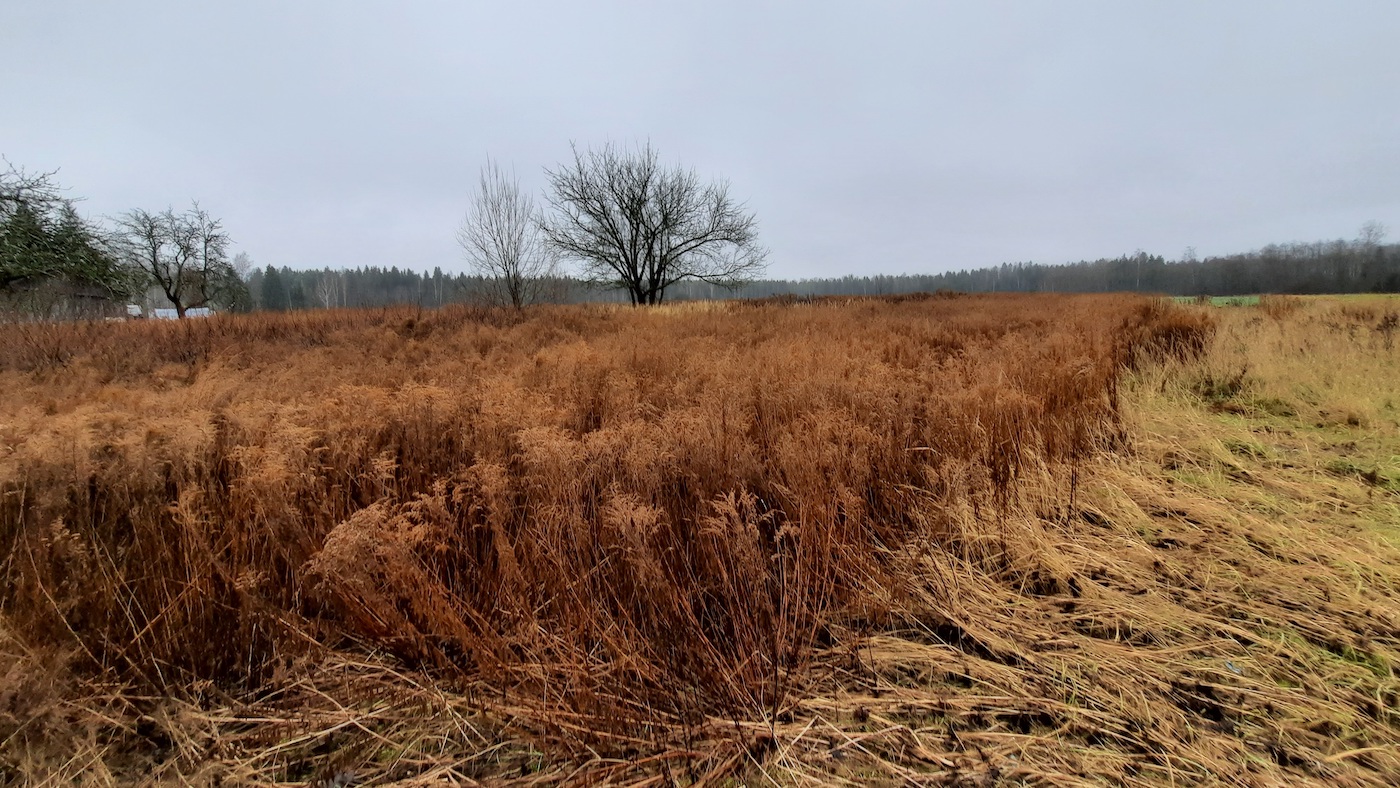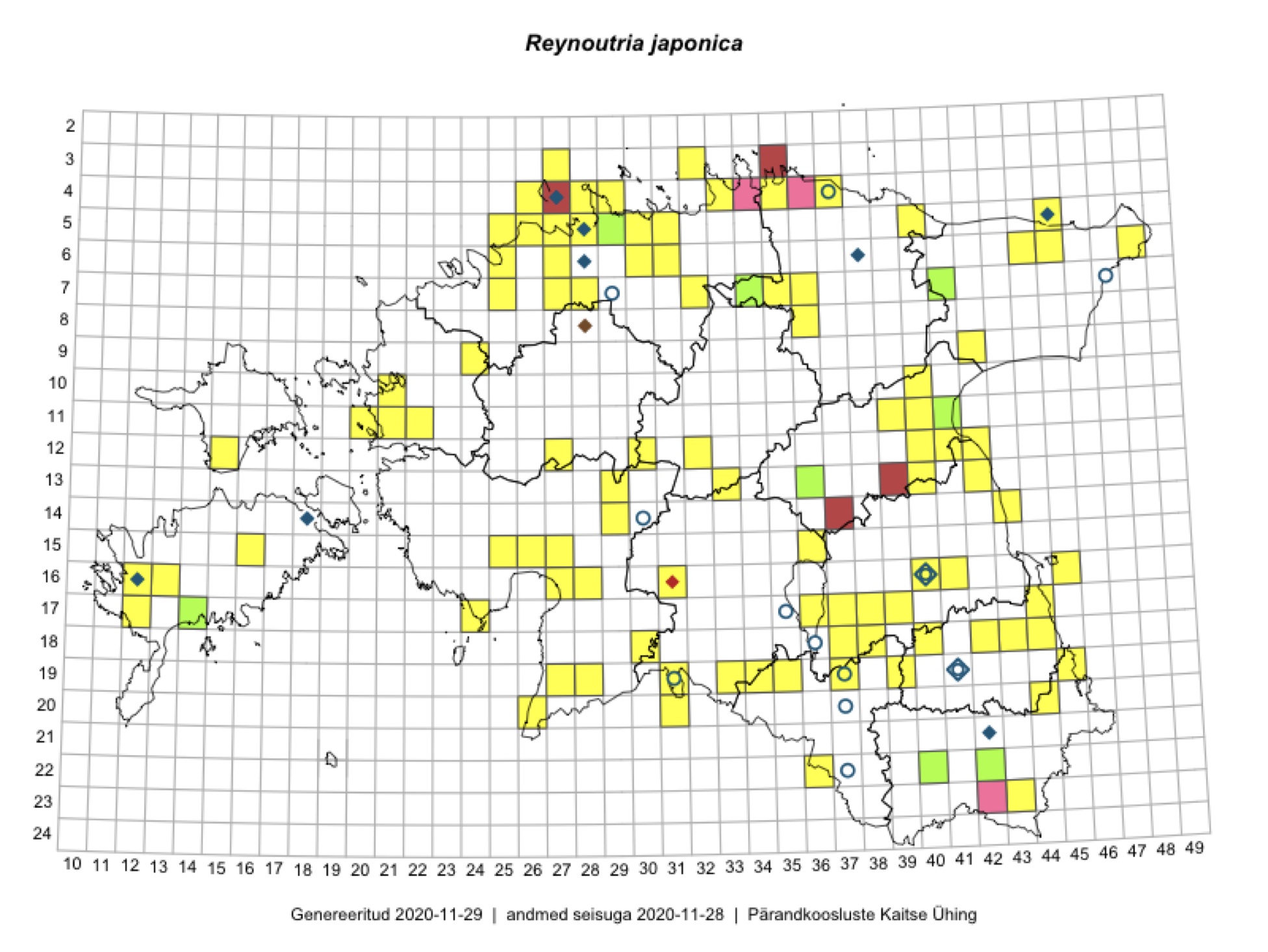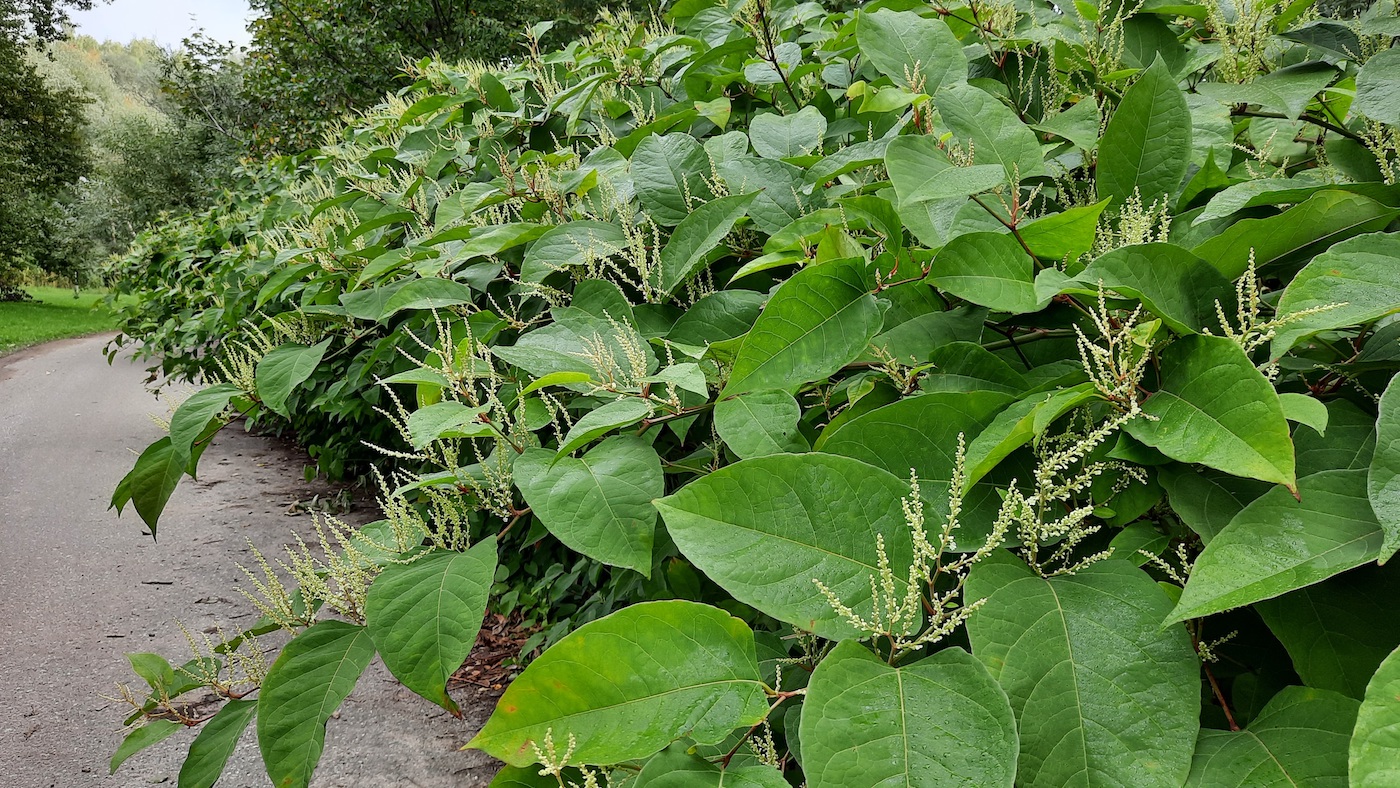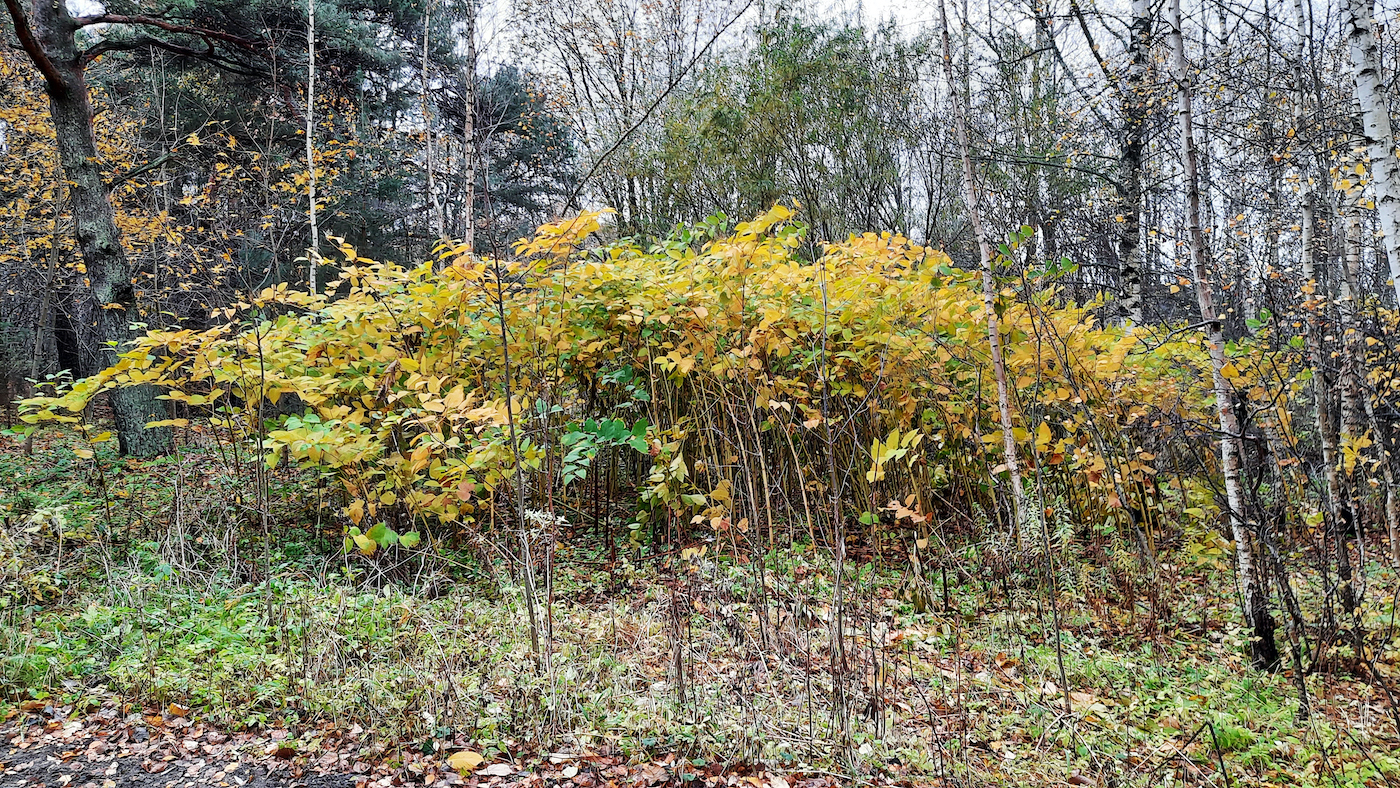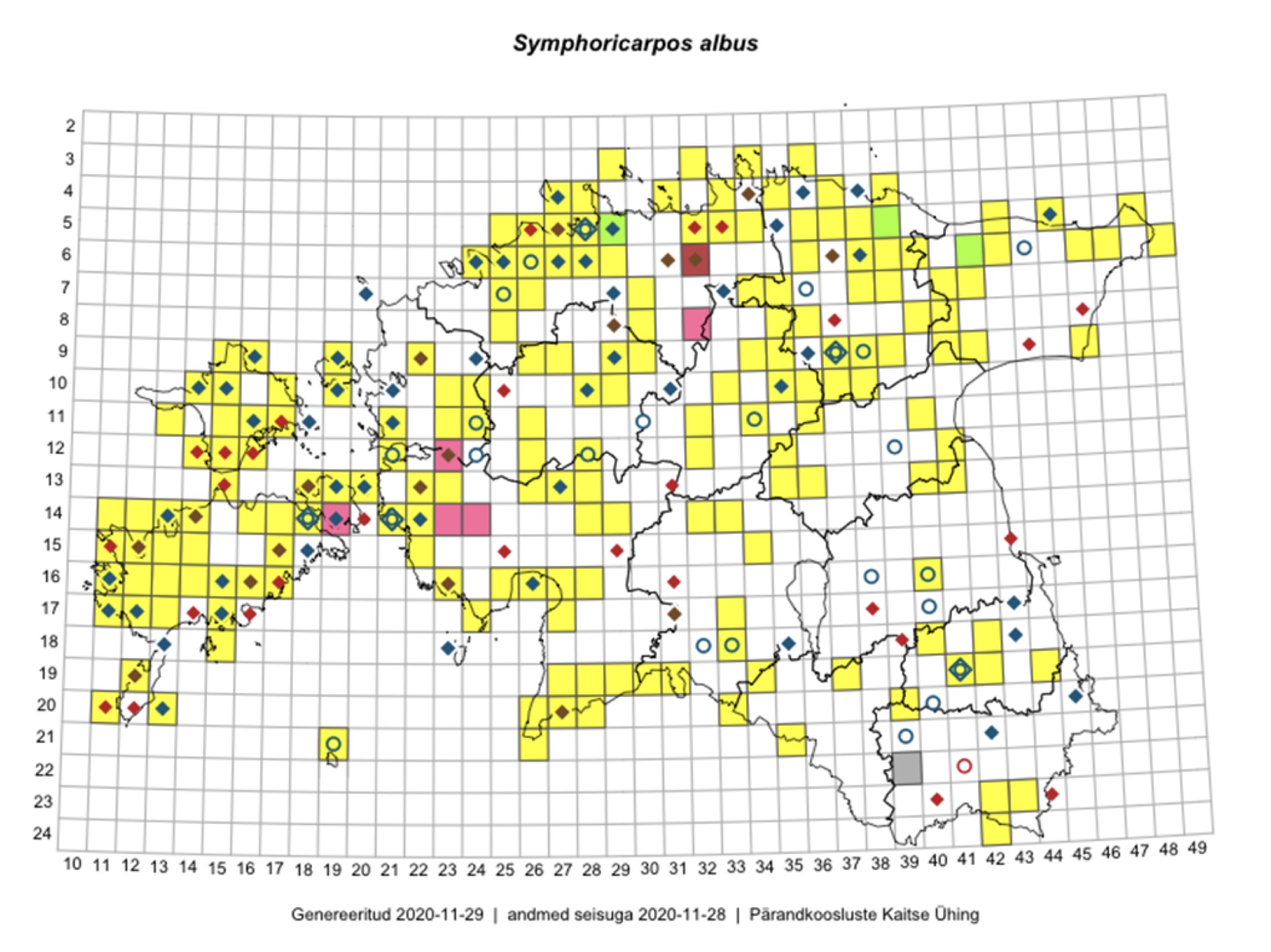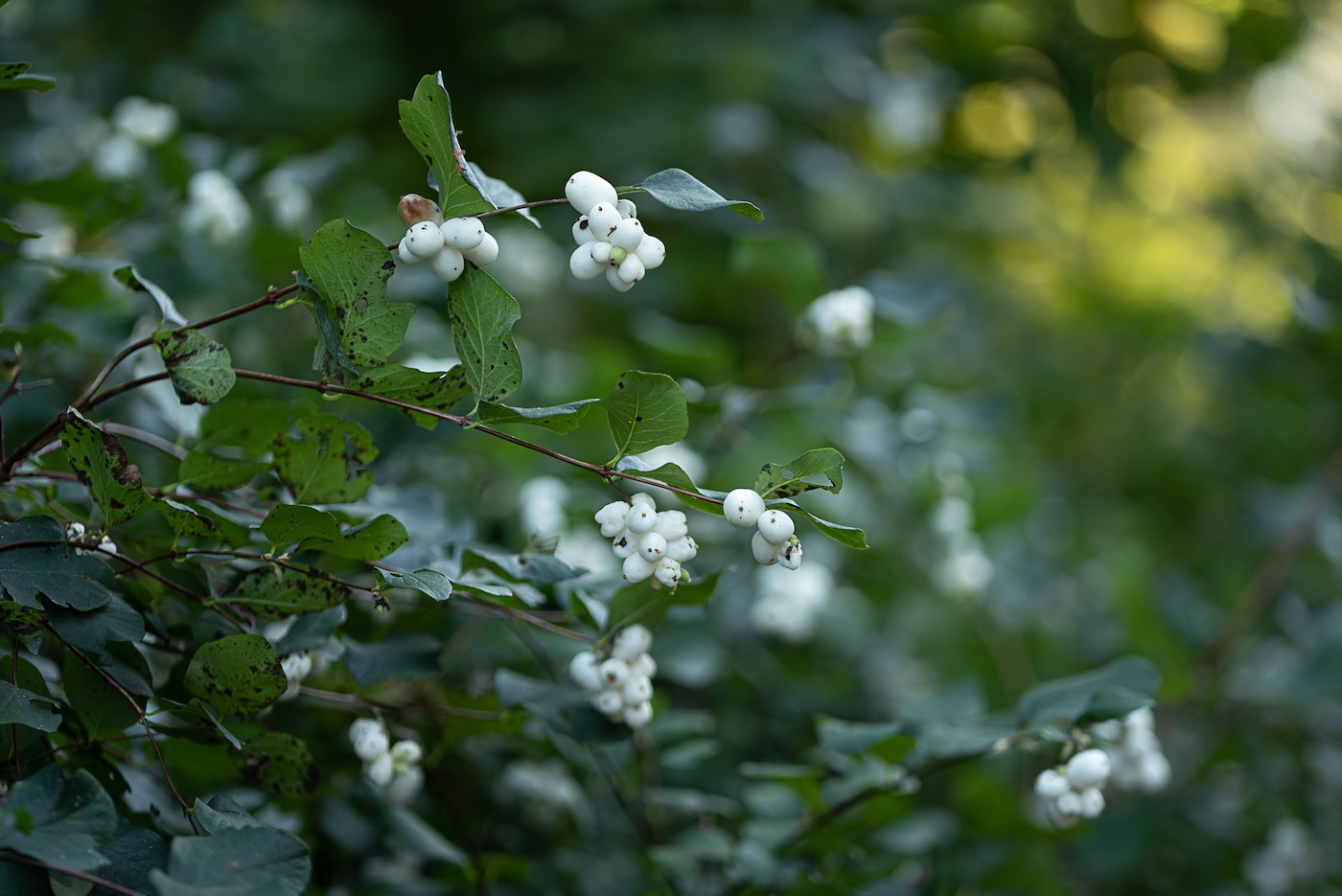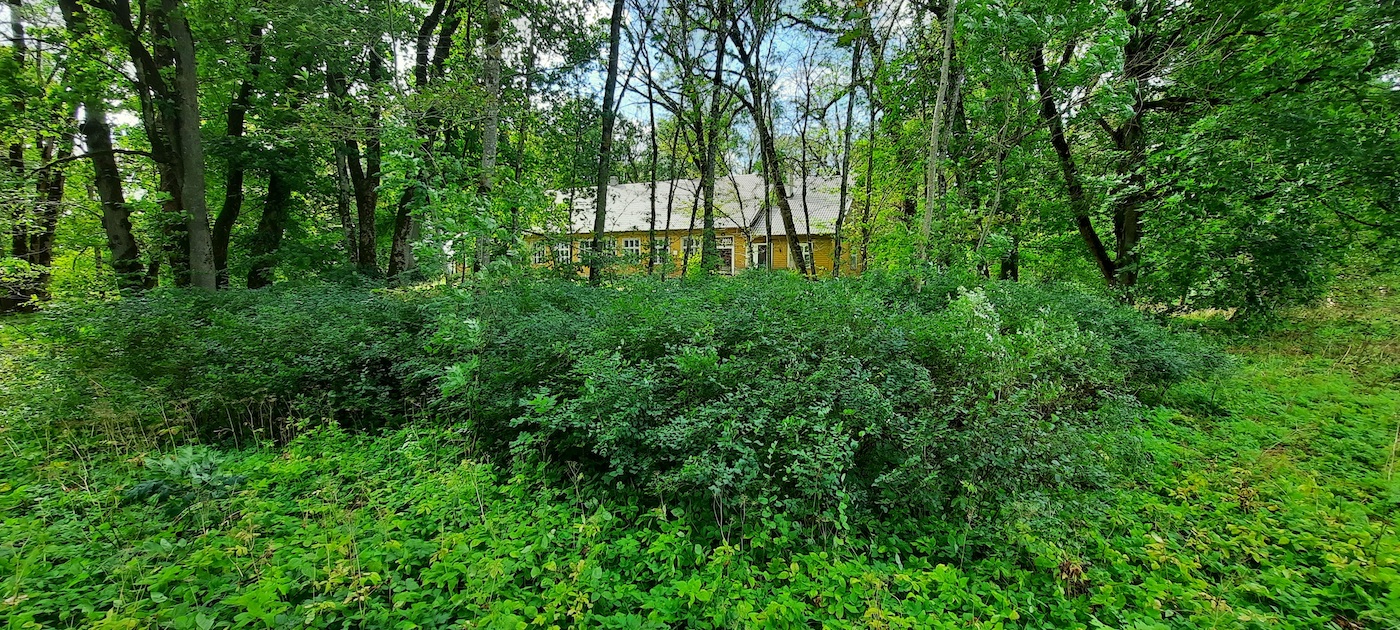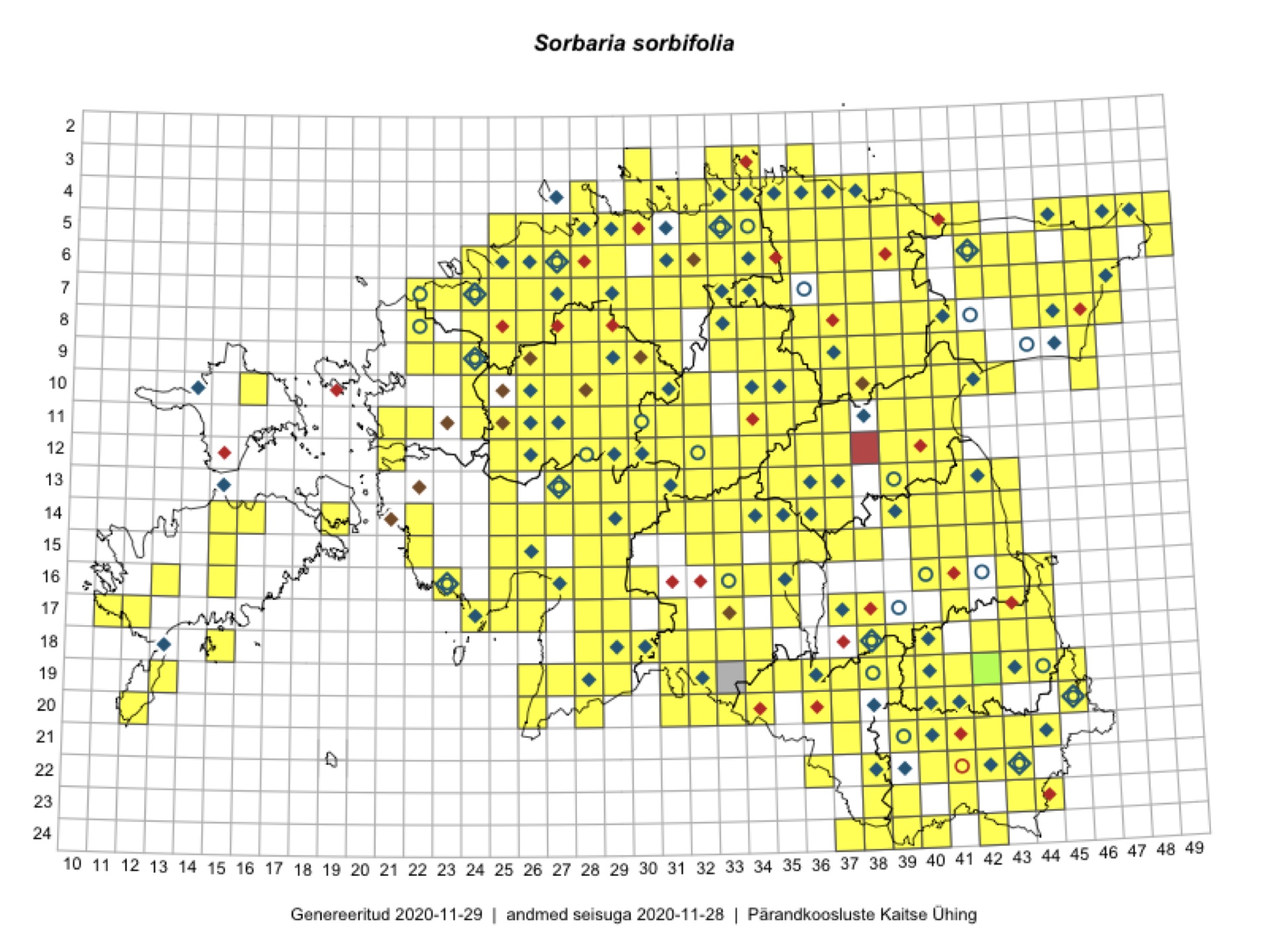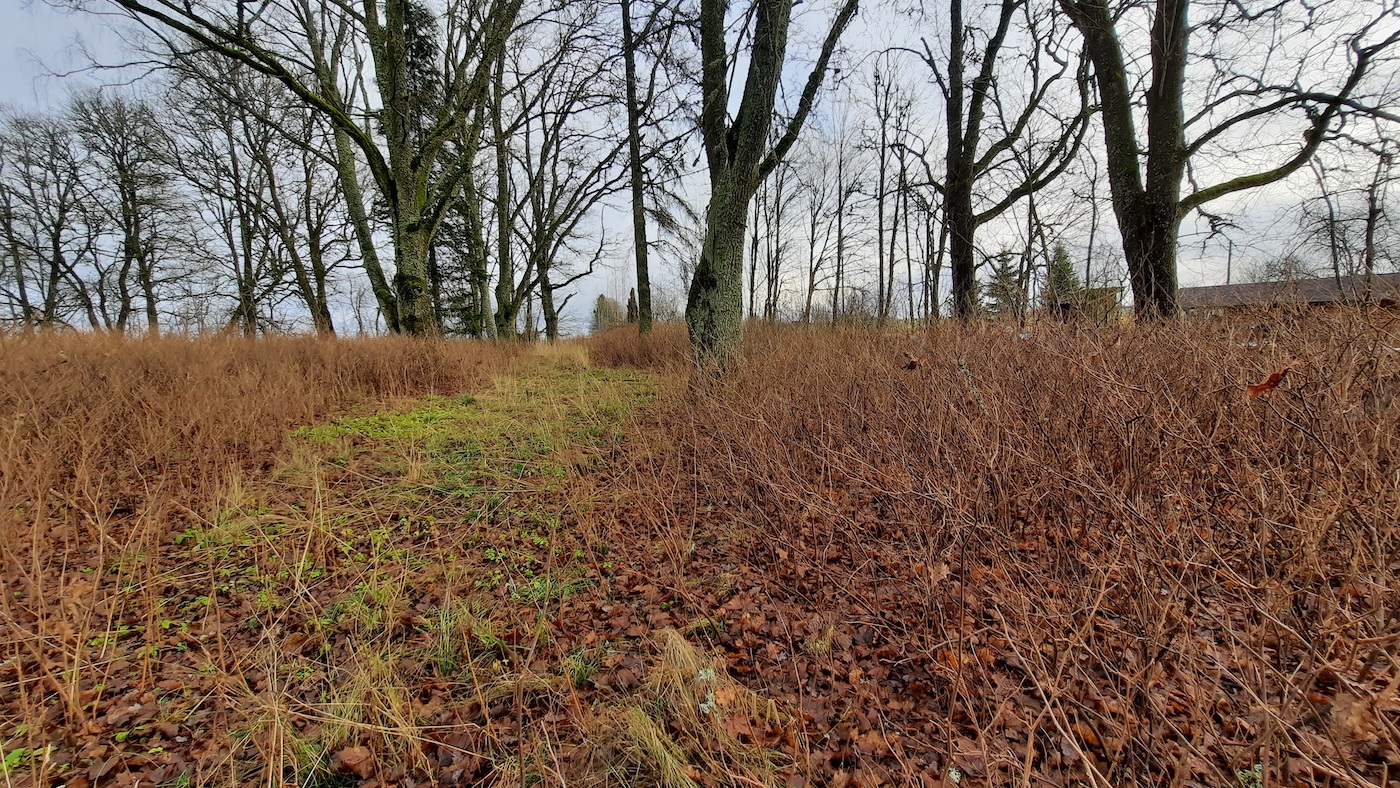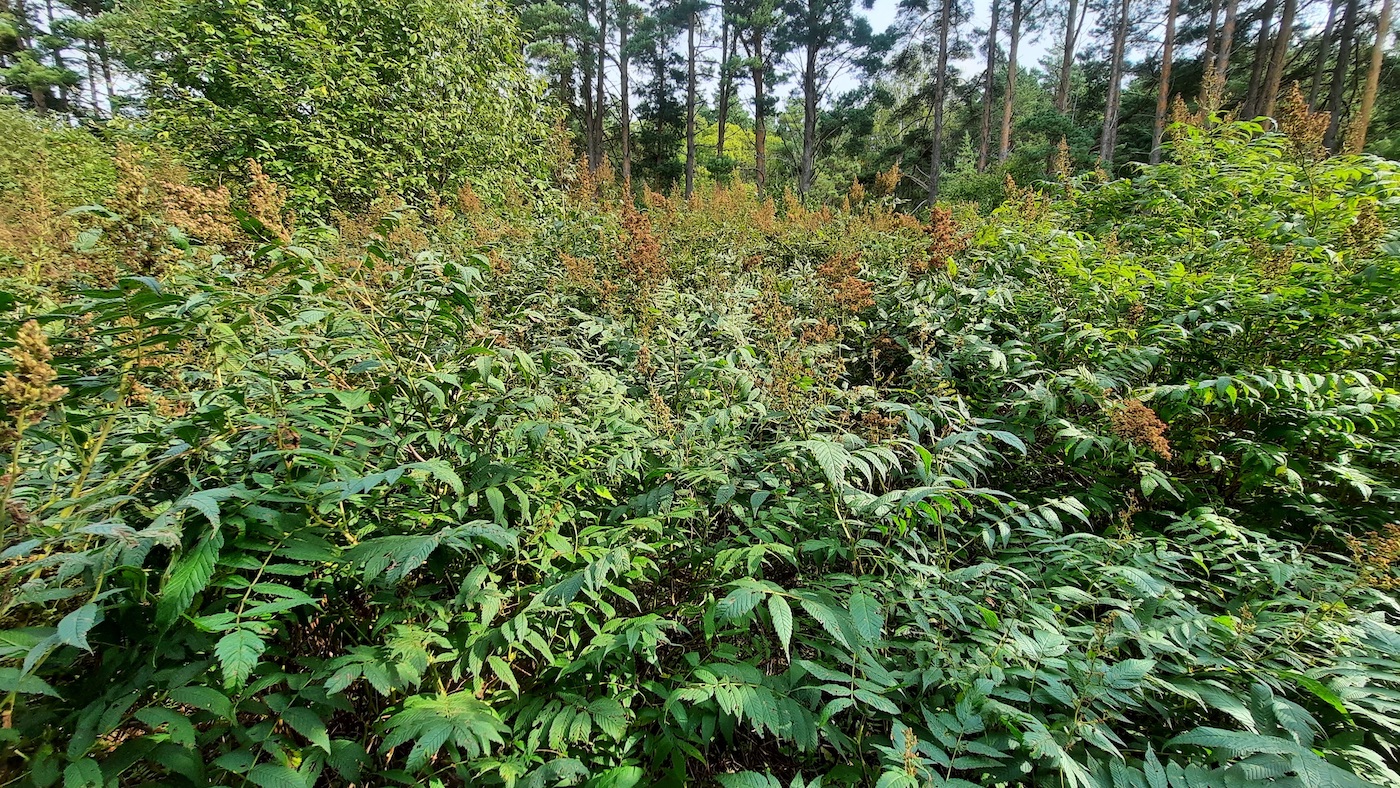Alien species are the second largest threat to biodiversity after habitat loss and fragmentation. In the course of the LIFE-IP ForEst&FarmLand project, we will develop new cost-effective methods for regulating alien species and focus on prevention, which is crucial for limiting the spread of alien species.
We test the control of four large plants – goldenrods, knotweeds, common snowberry, and false spiraea – using different methods. All of these species have escaped the garden over time and are now crowding out the local flora in the wild.
Regulation of alien species.
The knotweed, the Canadian goldenrod, and the giant goldenrod belong to the list of invasive alien species in Estonia, and the Nature Conservation Act prohibits their growth in Estonia. Common snowberries and false spiraea are also alien species; they form large, dense, and exceptionally durable clusters, leaving very little room for other plants to grow.
The species described above are a problem precisely when they escape the garden, as they threaten the natural balance if they spread uncontrolled in the wild. Mapping of fieldwork and experimental areas has shown that these plants enter the wild mainly from garbage and garden waste storage sites and abandoned farm gardens, as well as from places where soil has been moved.
(Switch on subititles while watching the video on regulation of alien species!)
While performing fieldwork during the project, we found 44 areas suitable for control experiments, which are located all across Estonia, on both private and state lands. In the winter of 2022, the Environmental Board contacted the landowners of the potential experimental areas, and more detailed test areas on private land will become clear once the owners have given permission to act on their land.
Based on written data, it is known that most of the plants we controlled came to Estonia during the nineteenth century: the giant knotweed in 1897, the common snowberry in 1883, the false spiraea in the early nineteenth century, and the Canadian goldenrod in 1807. It is also known that manor lords in the nineteenth century became more interested in rare and exotic woody plants, and so these species were introduced to manor parks and gardens, from where they spread to farm gardens over time.
In the test area, we are trying different control methods:
- mowing;
- cutting and treatment with an herbicide;
- hot steam treatment;
- shredding the plants with a chain shredder and then mowing;
- covering with a special durable geotextile.
We are testing different methods over a period of five years, from spring to autumn at specific intervals, and then analysing the effectiveness of each method. In control areas, we will monitor and evaluate the natural growth of the plants over a period of five years without control activities.
The aim of the experiments is not so much to clean up large areas as to check the effectiveness of the various methods and, on the basis of the results, to draw up control guidelines that would enable landowners and local governments to better control introduced species later on. Report (2024) on preliminary achivements can be found from here.
Conscientious behaviour on the part of each person helps to prevent or solve problems quickly. Gardeners and plant enthusiasts could prefer native species and refrain from introducing invasive species into the garden. We also recommend composting plant residue (stems, flowers, roots, and rhizomes) in your yard; if necessary, the plant residue should be incinerated. Under no circumstances should garden waste be dumped in the woods, on the edge of a road, or in the bushes, as foreign species that have been weeded or dug up will start growing there and their seeds will germinate.
It is often no longer possible to completely remove widespread alien species from Estonian nature, but by learning from examples, we can prevent the emergence of the next set of problems.
